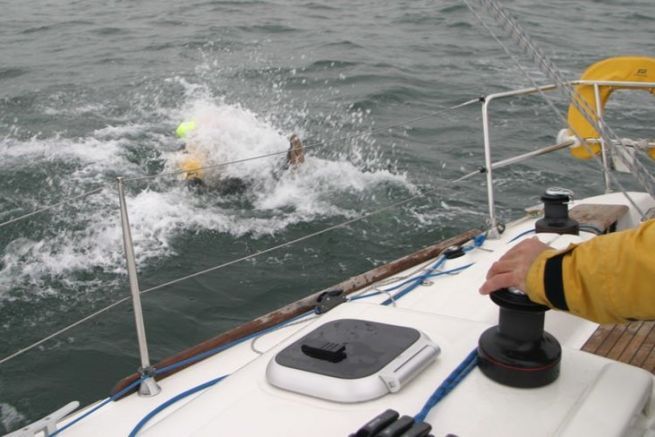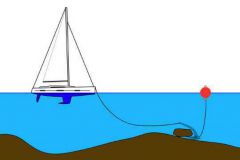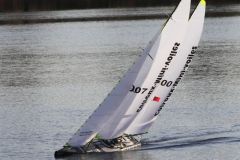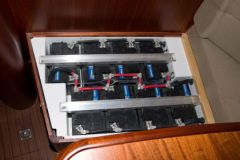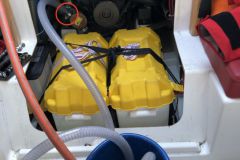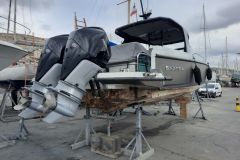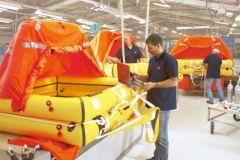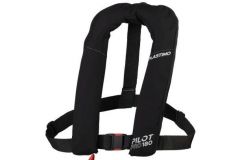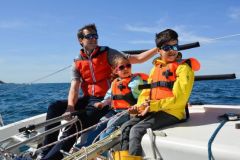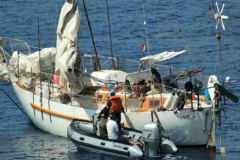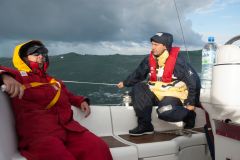When a person falls into the sea, their life expectancy is extremely short. Especially at night or if you are not prepared for such a possibility. Stress, fear and confusion will be your worst enemies to save the fallen occupant. We recommend that you read this topic to your teammates. There is no way to know who will fall!
There are six essential axes governing the management of a fall into the sea. We have organized this subject according to these axes. There is nothing to prevent you from adapting them to your case and to your boat or sailing area, the important thing is that you have integrated the principles and operating methods that we propose to you.
Notify
Preventing falls is often a matter of common sense.
- I tidy up the bridge and pick up anything that's not interesting to be there.
- I move only attached to a lifeline, especially when the weather is threatening.
- I move around wearing shoes (to prevent hitting my feet), but I can easily remove them once in the water (beware of boots that are too narrow).
- As skipper, I alert the crew of the movements I can cause (acceleration, loss of headway, tacking...)
- I move while keeping the rule of the 3 points of contact at the head (two feet on the ground and one hand on the die, two hands on one end and one foot on the ground...)
- I do not move around on the deck of the boat until I have notified someone of my whereabouts.
Float
Despite Archimedes' thrust, floating at sea is not as easy as it seems.
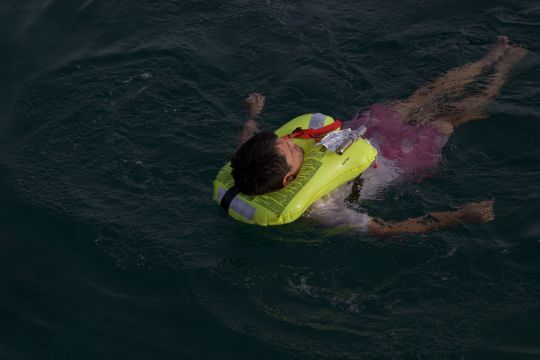
- I'm wearing always my life preserver.
- I'm making sure my entire crew is wearing always his life preserver.
- I'm showing the entire crew where the horseshoe buoy is.
- I'm making sure the horseshoe buoy is in position and attached to the boat.
- I know how to set my vest off if it doesn't inflate automatically.
- I know where the life jackets are when I'm inside the boat.
Alert
It is important that the alert for a fall overboard is relayed as quickly as possible, first within the boat, then to other boats and authorities.
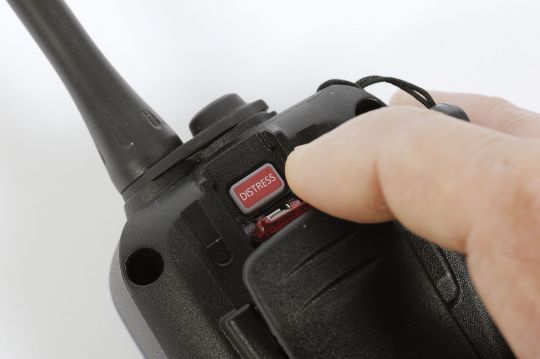
- I'm shouting A Man Overboard "as soon as I watch someone fall.
- I don't break eye contact with the person who fell, even to talk to other crew members.
- I press the "Ditress" key on the VHF to alert the authorities and other boats in the area.
- To help locate the victim, I press the MOB button on the GPS.
- I shine my flashlight at night in the direction of the person who fell.
- I count, aloud, from the moment of the fall, to be able to indicate approximately how long the person fell to the pilot, thus facilitating his return to the fall zone.
- I'm not jumping not in the water to assist the fallen person, a man overboard is enough.
Locate
The location of the person who has fallen remains the key to saving them. Indeed, what is the point of knowing that a person has fallen if you don't know where? Various tools are available to us on purpose, but they have to be used at the right time.
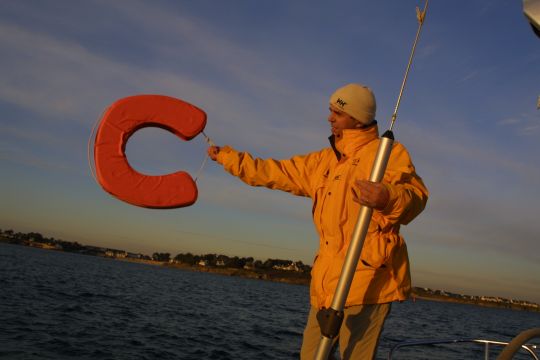
- I throw a floating device (horseshoe buoy, floating cushion...) at the moment of the fall into the sea.
- I'm throwing, in the direction of the victim, a silzig buoy which I will use for the recovery
- At night, I set off a tracking pole with a light device.
- I point a headlight or a lamp towards the person, always at night.
- If it didn't go off automatically, I set off the flashing light on my life jacket.
- If I don't have a flashing device, I'll set off the cyalune stick.
- There is a whistle on my lifejacket, I use it to make me more easily noticed by the boat I fell from.
Retrieve
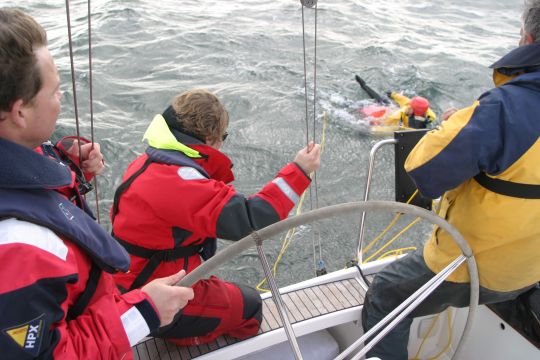
The timing of the crewmember's recovery is certainly one of the most critical. Nervousness, the desire to do the right thing and the joy of retrieving the buddy make one tend to want to speed up at this particular moment, when one should give oneself plenty of time to do things calmly and safely.
- The boat's pilot initiated one of the man overboard recovery manoeuvres.
- When the propeller came close to the victim, wandered broken, the rotation of the propeller was stopped and a crew member was assigned to ensure that it was not restarted.
- The bow of the boat comes between the wind and the victim, on the edge of the least crowded boat.
- Two crewmembers, equipped with a lifejacket and lifeline, extend a hand or a blast to the person who fell overboard to bring him or her back on board.
- It is common for the first recovery to fail. I don't get discouraged, I start again, possibly replacing the crew members who recover.
- A crew member takes the emergency blanket out of the survival bag to warm up the person who has fallen into the water as much as possible.
Reassure
Once the victim is back on board and safe, it's time to reassure them and make sure everything is as good as possible.
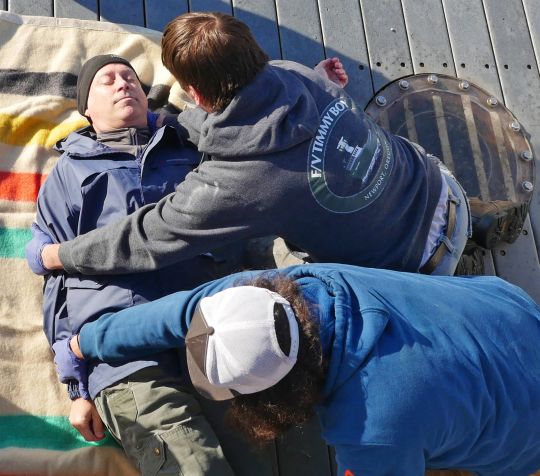
- I'm disposing the person who fell into the water inside the boat.
- I'm covering the person with the life blanket.
- I ask the person if he or she is in pain somewhere or feels good.
- I contact CROSS or the authorities alerted to the fact that the victim has returned on board and, if there is any doubt as to his or her state of health, I request a tele-consultation to check if everything is okay.
- I explain to the rescued person what happened, from his fall to the present moment, and I listen to everything he wants to tell me. I am willing to listen to anything they have to tell me, including their fears or anxieties, which I do not judge. This is the moment of "awareness" of gravity and can be especially hard for the victim of the fall.
Debrief, then
A fall into the sea is always a traumatic event. It can be beneficial, once everyone has calmed down, for the entire crew to sit down over a coffee and talk about how things went, to ensure that no one is left feeling frustrated or scared and will be able to react again if an incident occurs again.
